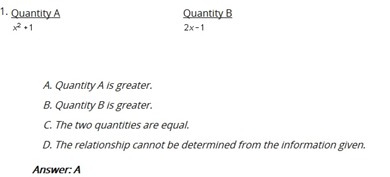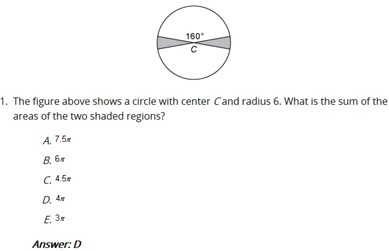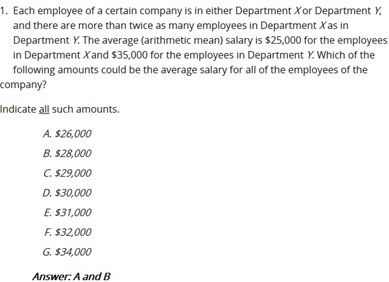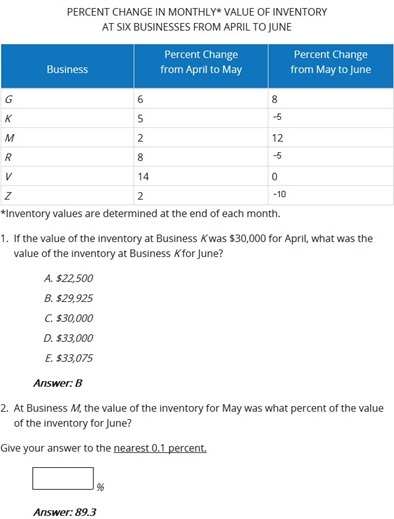In this article, I’m going to share some test information of GRE based on “The Official Guide to the GRE revised General Test,” 2nd edition. today, we will talk about quantitative reasoning.
The Quantitative Reasoning measure of the GRE revised General Test accesses your basic mathematical skills, understanding of elementary mathematical concepts and ability to reason quantitatively and to model and solve problems with quantitative methods. Many of the questions are word problems, which must be translated and modeled mathematically.
The skills, concepts and abilities are assessed in the four content areas:
| Arithmetic | * divisibility, factorization, prime, remainders, odd, even * arithmetic operations, exponents, roots * estimation, percent, ratio, rate, absolute value, * the number line, decimal representation, sequence of number |
| Algebra | * operations with exponent * factoring and simplifying algebraic expressions * relations, functions, equations, inequalities * solving linear and quadratic equations and inequalities * solving simultaneous equations and inequalities * setting up equations to solve word problems * coordinate geometry such as graphs of functions, equations... |
| Geometry | * parallel and perpendicular lines, circles * triangles (equilateral, isosceles, and 30-60-90 triangles) * quadrilaterals, other polygons, three-dimensional figures * congruent and similar figures * area, perimeter, volume * the Pythagorean theorem, angle measurement in degrees. |
| Data analysis | * mean, median, mode, range, standard deviation * quartiles, interquartile range, percentile * line graphs, bar graphs, circle graphs, boxplots, scatterplots * probabilities of compound event and independent event * random variables and normal distribution * combinations, permutations and Venn diagrams |
During the quantitative reasoning, remember that there are some important assumptions about numbers and figures such as:
|
* All number used are real number |
The Quantitative Reasoning measure has four types of questions:
| Types | Sample Questions |
| Quantitative Comparison |
 |
| Multiple-choice for one answer |
 |
| Multiple-choices for one or more answer |
 |
| Numeric Entry |  |
* reference: ETS website
Besides independent question, there is a part of a set of questions called Data Interpretation Sets. All of the questions in a data interpretation set are based on the same data presented in tables, graphs and other displays of data.
| Types | Samples |
| Data Interpretation Sets |
 |
Tips for answering each type of questions:
| Quantitative Comparison |
* Become familiar with the answer choices * Avoid unnecessary computations * Remember that geometric figures are not drawn to scale * Plug in numbers in question like algebric expressions * Simplify the comparison |
| Multiple-choice for one answer |
* Use the fact that the answer is just there * Examine the answer choices * When approximation is needed, be sure how close it is. |
| Multiple-choice for one more answer |
* Note the number of answer choices, some of them or all * For possible value question, use upper/lower bound. * Avoid lengthy calculations |
| Numeric Entry | * Make sure you answer the question that is asked * When rounding, take care of degree of accuracy * Examine the answer to see if it is reasonable |
| Data Interpretation Sets |
* Don’t spend time studying all of the information in detail * Graphs of bar, circle and data display are drawn to scale * To answer only on the basis of the data presented |
Using the Calculator
Notice that you can use the on-screen calculator provided in the computer delivered test when you need to do time-consuming computation such as long division and square roots. However, some questions can be answered more quickly by reasoning and estimating than by using the calculator. Finally, take note that the calculator respects order of operation, which is a mathematical convention such as parentheses first, and then exponentation , multiplications and division, and finally addition and subtraction.
Here are some mathematical convention I take notes:
| * Rounding: Tie-breaking rule: when it is positive, round it to the greater possibility when it is negative, round it to the lesser possibility Example, +1.4 will be +1 while +1.5 will be +2 –1.4 will be –1 while –1.5 will be –2 * Geometry The figure is not shown, it’s assumed to enclose convex region. |
For most Asia students, it’s not difficult to earn such a high score in quantitative reasoning measure of the GRE revised General Test. However, since we are not educated in North American, we may not be familiar with the mathematical conventions or terminology adopted in this test. Therefore, we still need to study and review this again.
